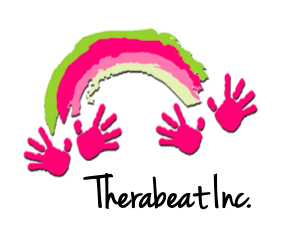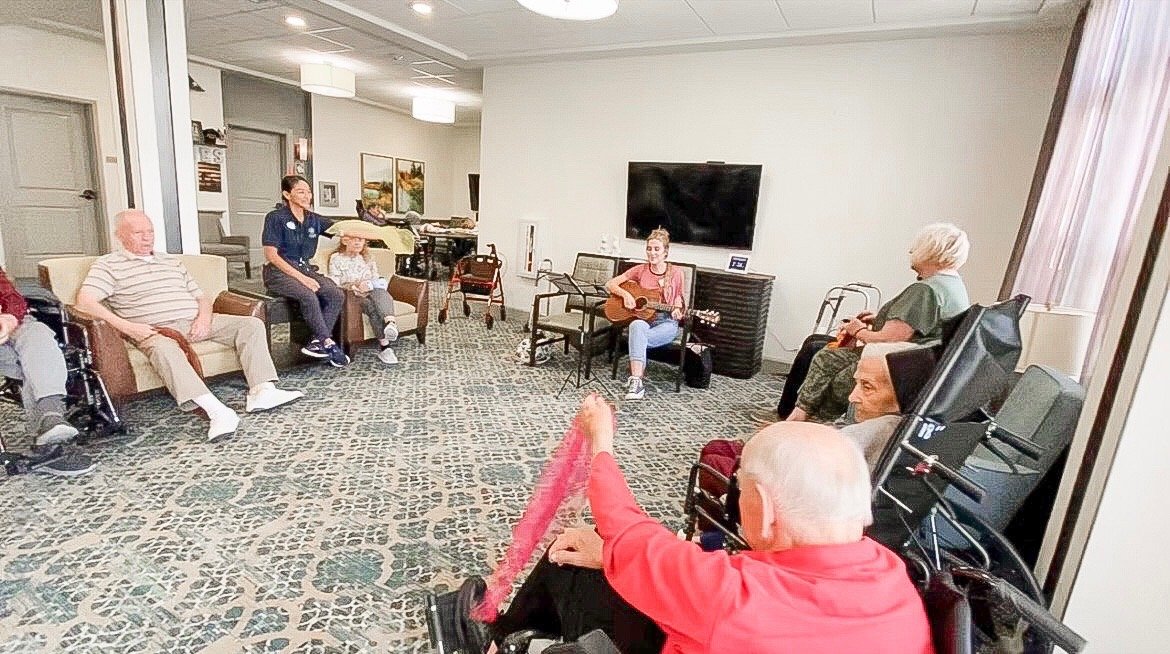Instrumentation is a regularly used form of music that can be enjoyed and played by many. Most instruments are made for the neurotypical individual to use. Over time, instruments have been adapted and adjusted to meet the needs of individuals with various physical, intellectual, or mental disabilities to use and enjoy for themselves. There is a wide range of needs addressed in music therapy sessions. That being said, a music therapist’s job is to find ways to accommodate those needs by adapting various aspects of instruments to meet the client where they are.
One example of a way to adapt instruments is by using color coding, whether that be for strings on a guitar or ukulele, color-coded sheet music for bells, or colored dots to use on piano keys. Color coding, according to Dorothy Pino, assisted her guitar students with learning the guitar chords and strings. The students that she taught with these adaptations displayed more confidence and learned the guitar at a much quicker pace than individuals without them. Pino recommends using Orff color order, with C being red and each diatonic pitch remaining in rainbow order. This way, individuals will be more likely to learn other instruments quickly, as that is a universal color system for a variety of other instruments as well. Color coordination is also excellent for clumping and sorting musical sections to provide cues for individuals who may have trouble with knowing what comes next, sight reading, or having difficulty with change.
An article written by Carlin McLellan explores when and why to use music technology within sessions and how modifying musical instruments technologically can be beneficial despite music therapists’ initial hesitations. Some examples of modifications that have been made just recently, following the COVID-19 pandemic, include digital instrumentation, such as ROLI blocks, a Makey Makey connected to an application such as garage band, or even the eye harp, which utilizes client head/eye movements. ROLI blocks are light-up boxes that connect to an application and allow for various sounds to emerge based on where an individual touches the blocks. Similarly, the Makey Makey is an adaptive instrument that uses touch to create sound using an application and wiring to an outside object. These instruments provide musical output in a way that still allows clients to feel that they have autonomy within their musical realm.
The important thing to remember when working with clients is that instruments should be accessible and motivating, meeting them where they are in terms of physicality, cognition, or intellectual level. Instrumentation should provide a structure for meeting goals and objectives, but should also provide feelings of confidence and excitement. Simple switches with instrumentation can make all of the difference for individuals with disabilities and provide that support and structure to achieve the best results possible.
-Mallory McDonald, Music Therapy Intern
References
McLellan, C. (2021). The Accessible Music Model: A Framework for Understanding When, How, and Why to Use Music Technology in Music Therapy. Australian Journal of Music Therapy, 32(1), 113–123.
Pino, D. (2022). Color-Coding for Confident Chording. School Band & Orchestra, 25(5), 24.






